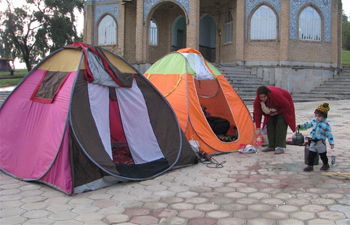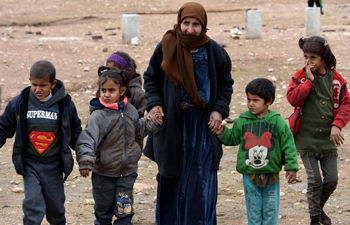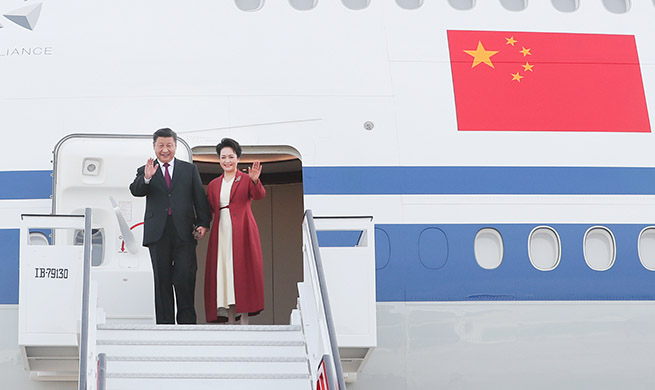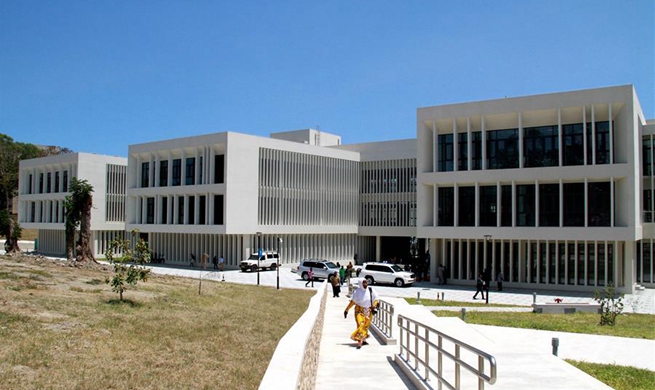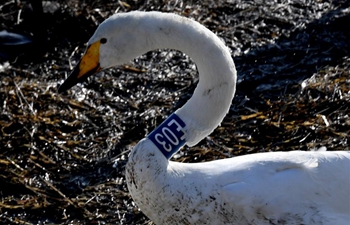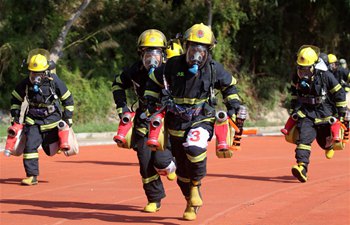PHNOM PENH, Nov. 28 (Xinhua) -- World Bank experts said here Wednesday that Cambodia's 2030 upper middle-income and 2050 high-income targets are "very ambitious" that requires the country to vigorously invest in human capital and infrastructure.
Cambodia is endeavoring to become an upper middle-income country by 2030 and a high-income country by 2050; however, achieving these targets requires rapid and sustained economic growth, said Norman V. Loayza, lead economist of the World Bank's development research group.
In the World Bank's classification, upper middle-income economies are those with a gross national income (GNI) per capital of at least 3,896 U.S. dollars, and high-income economies are those with a GNI per capita of at least 12,056 U.S. dollars.
In 2017, Cambodia had a GNI per capita of 1,230 U.S. dollars, which means the GNI per capita must more than triple in 13 years to reach the 2030 upper middle-income target, and be almost 10 times larger in 33 years, Loayza said during the launch of the World Bank's Cambodia Economic Update report.
"These targets are very ambitious. Most 'Asian tiger' economies had missed these targets historically," he said. "Only China had made the upper middle-income target in 13 years, and South Korea made the high-income target in 33 years."
He recommended that Cambodia should consider delaying the upper middle-income target from 2030 to 2035, saying that trying to grow too fast could create imbalances that threatened growth sustainability.
Loayza said the Southeast Asian nation should seek to maintain strong rates of human capital and total factor productivity growth.
He added that the country needs to increase investment rates, saying that an increase in investment to 28.5 percent of gross domestic product (GDP) by 2030 is needed to reach both the upper middle-income 2035 and high-income 2050 goals.
He also said Cambodia needs to increase savings rates by more than 10 percent of GDP to fund increased investment and to reduce dependence on foreign capital inflow.
According to the World Bank's report, Cambodia's growth rate is expected to be marginally higher than last year, reaching 7.1 percent in 2018.
It said the longer-term outlook remains positive, suggesting that the country needs to develop its physical and human capital to attain higher income status in the long term.
"To achieve its upper middle-income country aspirations, Cambodia needs to increase its investment in human capital and infrastructure and adopt reforms that enable sustained and inclusive growth," said Inguna Dobraja, World Bank country manager for Cambodia.
"Mobilizing significant domestic savings to boost investment is critical to attain what high-performing Asian economies have achieved," she said.
Chheang Vanarith, deputy director general of the General Department of Policy at Cambodia's Ministry of Economy and Finance, said the report was very important, providing some useful policy recommendations to the government.
"Overall, I agree with the study that we need to increase our investment in order to achieve our visions 2030 and 2050, but to some extent, it's debatable whether we can achieve it or not by 2030 or 2035," he said.


